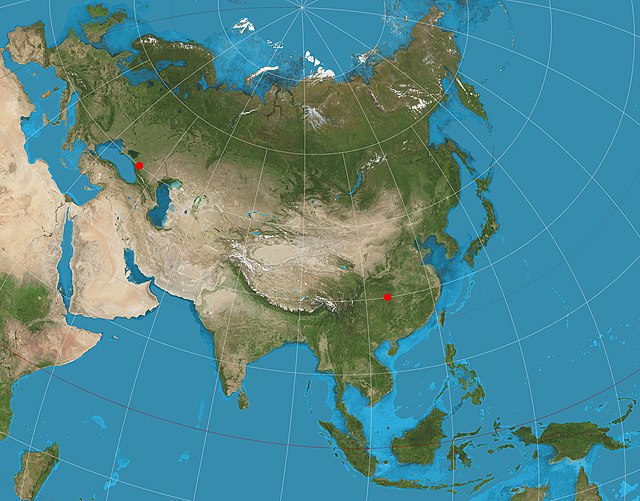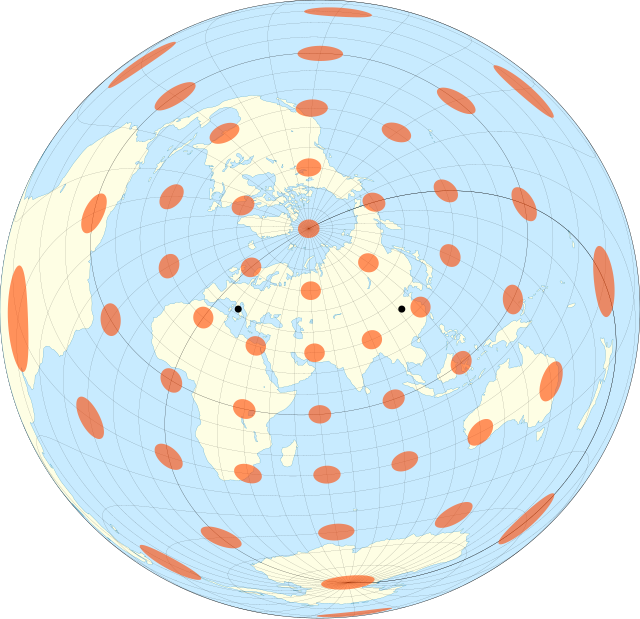Top Qs
Timeline
Chat
Perspective
Two-point equidistant projection
Two-point equidistant map projection From Wikipedia, the free encyclopedia
Remove ads
The two-point equidistant projection or doubly equidistant projection is a map projection first described by Hans Maurer in 1919 and Charles Close in 1921.[1][2] It is a generalization of the much simpler azimuthal equidistant projection. In this two-point form, two locus points are chosen by the mapmaker to configure the projection. Distances from the two loci to any other point on the map are correct: that is, they scale to the distances of the same points on the sphere.


The two-point equidistant projection maps a family of confocal spherical conics onto two families of planar ellipses and hyperbolas.[3]
The projection has been used for all maps of the Asian continent by the National Geographic Society atlases since 1959,[4] though its purpose in that case was to reduce distortion throughout Asia rather than to measure from the two loci.[5] The projection sometimes appears in maps of air routes. The Chamberlin trimetric projection is a logical extension of the two-point idea to three points, but the three-point case only yields a sort of minimum error for distances from the three loci, rather than yielding correct distances. Tobler extended this idea to arbitrarily large number of loci by using automated root-mean-square minimization techniques rather than using closed-form formulae.[6]
The projection can be generalized to an ellipsoid of revolution by using geodesic distance.[7]
Remove ads
See also
References
Wikiwand - on
Seamless Wikipedia browsing. On steroids.
Remove ads
